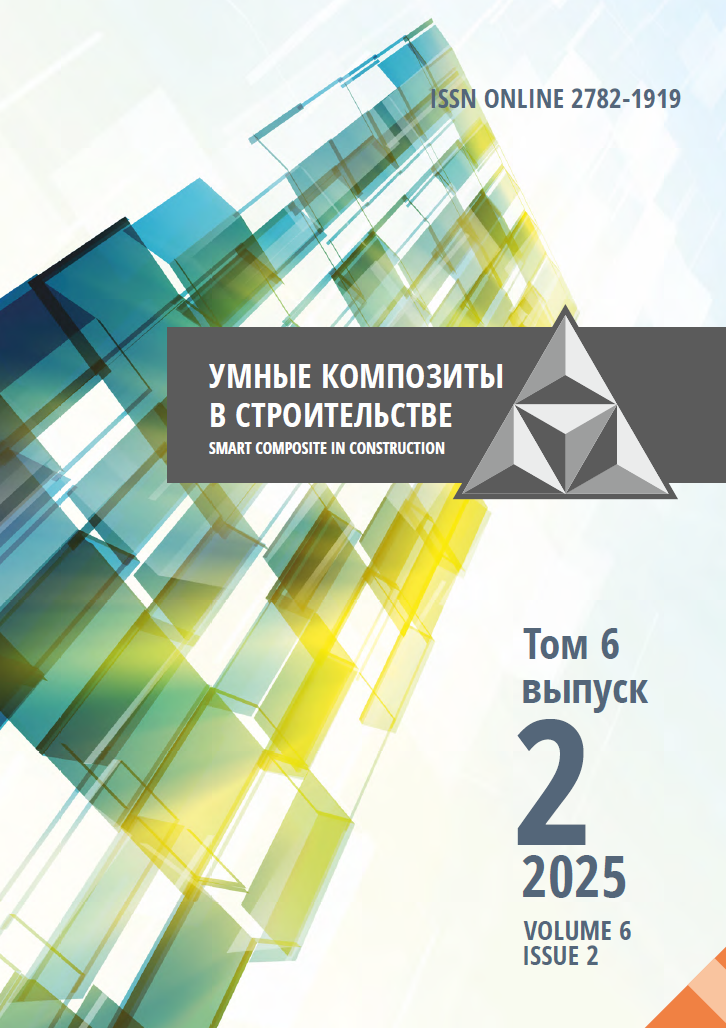Kostroma, Kostroma, Russian Federation
Kostroma state University (Department of logging and wood processing industries, department chair)
from 01.01.2016 to 01.01.2019
Kostroma, Kostroma, Russian Federation
Sound absorption and thermal conductivity parameters were investigated for different variants of structural design of external and internal walls made of CLT-panels. The authors used the COMSOL Multiphysics software package to evaluate the effectiveness of sound-absorbing materials. It allows modelling the process of sound spreading through a multilayer enclosing structure. The authors recommend using CLT-panels with inner layers of heat- and sound-insulating materials. Such panels provide a high level of factory readiness of structures. The authors studied the sound absorption capacity of structures with mineral wool and polymer foam inserts. The paper considers variations in the arrangement of inserts within CLT-panels and describes their performance at different sound frequencies. The authors have determined the heat conductivity indices of the enclosing structures for the conditions of the Kostroma region by the calculation method. The main element of the structures are five- and seven-layer wooden panels. In this case, the heat insulation layer of mineral wool should be at least 100 mm in seven-layer panels with a thickness of 224 mm.
CLT-panels, wooden house building, sound insulation, sound conductivity, thermal conductivity
1. Government of the Russian Federation. (2022), On approval of the Strategy for the Development of the Construction industry and Housing and Communal Services of the Russian Federation for the period up to 2030 with a forecast up to 2035: Decree of the Government of the Russian Federation dated October 31, 2022, no. 3268-r (in Russian).
2. Arzimanov, D.I. and Gaevskaya, Z.A. (2023), “Comparative analysis of energy efficiency of CLT panels for residential multi-storey buildings in St. Petersburg”, Inzhenernye issledovaniya, vol. 2, no. 12, pp. 11-18 (in Russian).
3. Jones, K., Stegemann, J., Sykes, J. and Winslow, P. (2016), “Adoption of unconventional approaches in construction: The case of cross-laminated timber”, Construction and Building Materials, vol. 125, pp. 690-702. https://doi.org/10.1016/j.conbuildmat.2016.08.088
4. Bulgakova, I.A. (2022), “Improving energy efficiency in the housing and communal complex as a way to reduce the carbon footprint”, Energosberezhenie, no. 7, pp. 1-13 (in Russian).
5. Esaulenko, I.V. (2021), “Prospects for the development of high–rise wooden housing construction in Russia on the example of foreign experience”, Arkhitektura, stroitel'stvo, transport, no. 4, pp. 17-25, DOI:https://doi.org/10.31660/2782-232X-2021-4-17-25 (in Russian).
6. RIA Novosti. (2018), A new look at a house made of wood. Wooden house construction in Russia [online]. Available at: https://ria.ru/20180907/1510231385.html (accessed 12.01.2025) (in Russian).
7. CLT RUS. (2024) Available at: https://clt-rus.ru (accessed 12.01.2025) (in Russian).
8. Titunin, A.A. (2024), “Determination of the coefficient of thermal conductivity of wooden glued structures, taking into account the macrostructure and density of wood”, Smart Composite in Construction, vol. 5, no. 1, pp. 8-18 (in Russian).
9. Borovikov, A.M. and Uglev, B.N. (1989), Handbook of Antiquitie. Moscow: Forest Industry (in Russian).
10. Santos, P., Sousa, L., Godinho, L., Correia, J.R. and Dias, A. (2021), “Acoustic and thermal behaviour of cross-insulated timber panels”, Journal of Building Engineering, vol. 44, 103309. https://doi.org/10.1016/j.jobe.2021.103309
11. Ovsyannikov, S.N. (2023), “Problems of providing thermal protection and sound insulation in buildings made of wood”, Proceedings of the XIII International Scientific and Practical Conference, Tomsk, Russia, pp. 15-24 (in Russian).
12. Caniato, M., Bettarello, F., Ferluga, A., Marsich, L., Schmid, C. and Fausti, P. (2017), “Acoustic of lightweight timber buildings: A rev”., Renewable and Sustainable Energy Reviews, vol. 80, pp. 585-596. https://doi.org/10.1016/j.rser.2017.05.110
13. Rytov, A.D. and Titunin, A.A. (2024), “Analysis of the effect of the thickness of CLT panels on the insulation of air noise in residential buildings”, Young Scientists for the Development of the National Technological Initiative (POISK), no. 1, pp. 410-411 (in Russian).
14. COMSOL Multiphysics. COMSOL Multiphysics is a multiphysical modeling software developed by COMSOL [online]. Available at: https://www.comsol.com (accessed 03.01.2025).
15. State Standard 12090-80 Frequencies for acoustic measurements. Preferred series. Moscow, Publishing House of Standards, 1980. 2 p. (in Russian)
16. Code of Rules 51.13330.2011 Noise protection. Updated version of SNiP 23-03-2003 (with Amendments no. 1, 2, 3). Moscow, JSC «TSPP», 2010. 40 p. (in Russian).
17. Vinogradov, D.V. and Press, M.R. (2010), “Study of sound insulation of enclosing structures made of concrete wall stones «Besser»”, Vestnik MGSU, 1, pp. 304-311 (in Russian).
18. Code of Rules 50.13330.2012 Thermal protection of buildings Updated edition of SNiP 23-02-2003. Moscow, Rosstandart, 2012. 95 p. (in Russian).
19. Code of Rules 131.13330.2020 Building climatology Updated edition of SNiP 23-01-99. Moscow, Rosstandart, 2020. 146 p. (in Russian).
20. Code of Rules 23-101-2004 Design of thermal protection of buildings. Moscow, FSUE CCP, 2004. 139 p. (in Russian).








